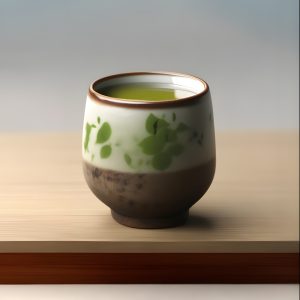
Besides tea, one of my hobbies is cooking.
I like to make different Japanese dishes, since I can watch videos and read recipes in that language.
One thing I’ve noticed, is that in Japan they use MSG (monosodium glutamate) as if it was something as basic as sugar or salt.
MSG is found naturally in many ingredients. It adds umami taste to food.
Japanese tea is also high in it.
In fact, the better the quality of the green tea, the more umami taste it will have.
So, one day I decided to add MSG to green tea and see what it would taste like.
Here’s the one that I like to use.
Can a bancha be turned into a gyokuro?
Gyokuro is a type of green tea that has a high quality, and a lot of umami taste.
Meanwhile, bancha is an economic tea that offers very little umami.
For my experiment, I prepared two cups of bancha (120 ml, 4 oz) at the same time.
Then I added about half a teaspoon of MSG to one of them.
The bancha with the MSG did have more umami taste, but it was way too much.
It felt like a heavy broth, something to cook with as opposed to drinking.
I guess that I added so much MSG that it became undrinkable.
Very well, I’ll make another batch but only use a small pinch of MSG.
This time the result was much better.
The bancha had a bold umami taste.
However, it was out of balance.
A gyokuro doesn’t only have more umami taste. It also has an added sweetness, and fresh and marine notes.
In other words, you can’t make a bancha into a gyokuro just by adding MSG.
It’s the same when cooking. One can’t make up for a low quality ingredient just by adding more of a specific seasoning.
While it was a fun experiment, I wouldn’t recommend using MSG for this purpose.
It’s not easy to get the right balance. You can ruin your tea.




